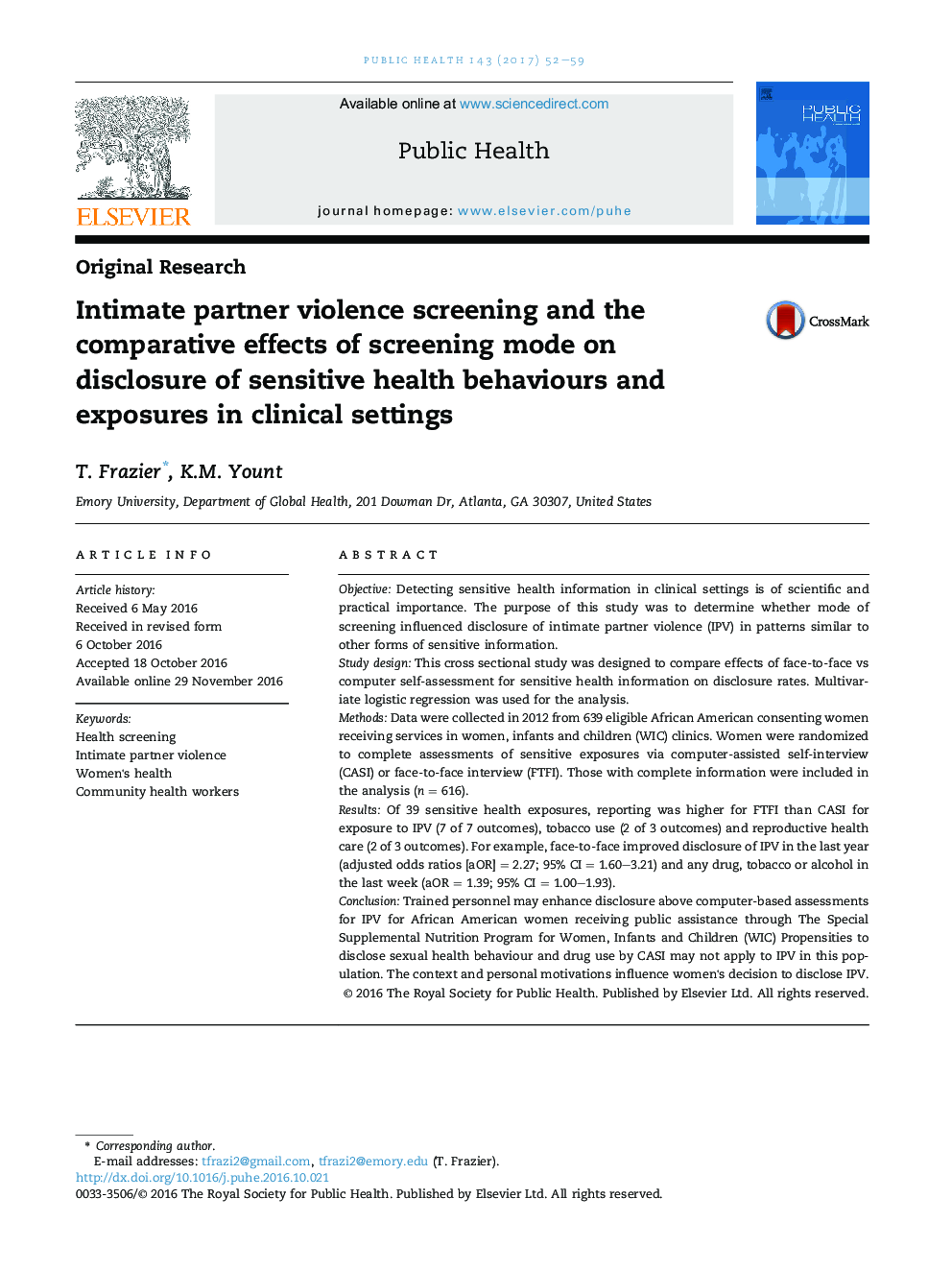| کد مقاله | کد نشریه | سال انتشار | مقاله انگلیسی | نسخه تمام متن |
|---|---|---|---|---|
| 5123050 | 1487200 | 2017 | 8 صفحه PDF | دانلود رایگان |
- Screening modes have different effects on disclosure based on the emotional quality of the health information being disclosed.
- Motherhood is a critical time of susceptibility for intimate partner violence disclosure in the face-to-face context.
- Screening in clinics is difficult but it is an area where the use of community health workers could prove very effective.
ObjectiveDetecting sensitive health information in clinical settings is of scientific and practical importance. The purpose of this study was to determine whether mode of screening influenced disclosure of intimate partner violence (IPV) in patterns similar to other forms of sensitive information.Study designThis cross sectional study was designed to compare effects of face-to-face vs computer self-assessment for sensitive health information on disclosure rates. Multivariate logistic regression was used for the analysis.MethodsData were collected in 2012 from 639 eligible African American consenting women receiving services in women, infants and children (WIC) clinics. Women were randomized to complete assessments of sensitive exposures via computer-assisted self-interview (CASI) or face-to-face interview (FTFI). Those with complete information were included in the analysis (n = 616).ResultsOf 39 sensitive health exposures, reporting was higher for FTFI than CASI for exposure to IPV (7 of 7 outcomes), tobacco use (2 of 3 outcomes) and reproductive health care (2 of 3 outcomes). For example, face-to-face improved disclosure of IPV in the last year (adjusted odds ratios [aOR] = 2.27; 95% CI = 1.60-3.21) and any drug, tobacco or alcohol in the last week (aOR = 1.39; 95% CI = 1.00-1.93).ConclusionTrained personnel may enhance disclosure above computer-based assessments for IPV for African American women receiving public assistance through The Special Supplemental Nutrition Program for Women, Infants and Children (WIC) Propensities to disclose sexual health behaviour and drug use by CASI may not apply to IPV in this population. The context and personal motivations influence women's decision to disclose IPV.
Journal: Public Health - Volume 143, February 2017, Pages 52-59
